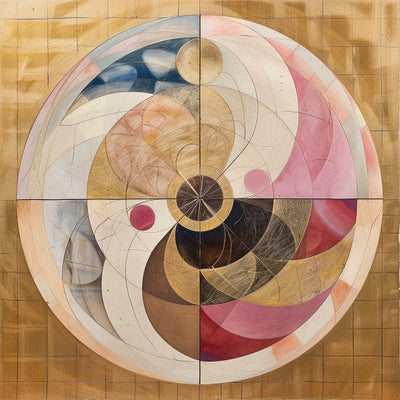You Don’t Have to Do It Right: Finding the Sweet Spot Between Discipline and Dogma
This is an exploration of the positive and negative aspects of specificity and control on one hand, and openness and acceptance on the other.
I love and appreciate specificity. I love details in line and color in a harmonic design, the soaring notes in a perfectly played piece of music, the line of a graceful S turn on a bluebird day on a freshly powdered mountain, the exquisite hand motions in hula. I especially like the detailed awareness of breath and body that I learned in my yoga practice and studies.
Anyone who has been a dancer, athlete, or martial artist will know what I mean. There is beauty in discipline, or blissipline and it can lift us to higher expressions of human potential in many spheres. “Again, again, again!” the coach will say, and suddenly we can do more than we ever believed possible. But beyond stretching our capacity, high levels of control, precision, and attention are required in life or death contexts—think of the careful safety checks preceding scuba, skydiving, firing ranges, or the hunt.
In other contexts, though, what is portrayed as “discipline” can be harmful and shaming dogma— habitual rules that never arrive at “blissipline”.
Sometimes “doing it right” is a mask for control. Orthodoxy (“correct opinion”, or rigid and uncompromising beliefs) can create an environment that fosters abusive behavior, especially when coupled with unchecked authority, a lack of transparency, and a reluctance to address concerns or criticisms. This is particularly true in mystery schools, secret societies, rigorous esoteric and gnostic practices, and highly ritualized religiosity. It can be true of cultural norms and standards, political parties, and subcultures of many kinds. Such environments are all vulnerable to the slippage of discipline into dogma. Their zealotry builds walls between ingroups and outgroups, limits individual growth, and inhibits understanding and empathy. It can also create great suffering in the people exposed to its inflexibility.
If you have grown up in a repressive environment that is orthodox—e.g., a very patriarchal religion—you may ultimately turn away from any kind of strict practice, even one that might be beneficial or enjoyable, as it triggers memories of misaligned power and control. Or you may double down on control, and become a zealot yourself. Can we find the sweet spot in this mix?
Shame is a common response in orthodox and dogmatic groups. Shame responses can be triggered when individuals feel that they do not or cannot measure up to the expectations set by their community, culture, or religious beliefs. When someone is unable to conform to these expectations they may experience feelings of inadequacy, self-blame, or guilt. Shame responses can also manifest in the fear of being excluded or rejected by the community adhering to these practices. Some individuals may feel like they are outside the hoop—and that if they fail to adhere to the prescribed rules they are not among the "chosen" ones.
Ironically—or maybe sadly—this fear of rejection can lead to a heightened need to control and police others: a defense mechanism to circumvent the shame they associate with their own shortcomings. They may become even more rigid in their practices and beliefs, attempting to maintain a sense of worthiness by adhering obsessively to the established norms.
Others just attempt to leave. Because restrictive environments may foster feelings of suffocation, oppression, or emotional disconnection, some people make the decision to abandon such communities or groups, and find a more inclusive and compassionate space where they can express their authentic selves without fear of judgment or shame. If practices no longer serve their growth and well-being, they may choose to leave behind those traditions in pursuit of personal freedom and autonomy, or to seek alternative paths that align with their values and aspirations, and help them continue to evolve spiritually and emotionally. Of course, it can be difficult for people to leave these familiar communities—partly because of the relationships formed in those environments, but also because they have taken in those shaming voices so deeply, and for so long, that they have become a kind of internalized oppressor. Unwinding that oppressor is a gradual process, and can take a very long time.
So what’s the draw of such groups? As they appear to be a pervasive tendency in human culture, their dogma and orthodoxy must represent some kind of adaptation. We know from psychosocial research that excessive control can be a defense mechanism against inner chaos or abusive environments, and can also be a way of numbing—a defense against feeling inner chaos. And they can also be a defense against abusive environments, messaged from generation to generation: “Do it right, be perfect, and you won’t draw fire or ire.”
We need to recognize the intention behind the use of spiritual knowledge and practices. If we are teaching, coaching, or guiding, we must learn to differentiate between the urge to control and an invitation to facilitate awareness. Some detailed rituals are beautiful and elegant; they invite a state change, which I write about in my book Reverence. Some rituals in orthodoxy are beautiful communions, and can lead to ecstatic states and deep connection in groups and communities.
Let’s take yoga. When I teach, my intention is to use it as a tool for promoting self-love, curiosity, and connection with the body and breath. I transmit traditional principles as an invitation, not as an imposition. The point of this ancient practice is not to make people wrong, to feel “less than,” or to impose on or make unreasonable demands on the body. Personally, I was taught initially to force my body into the asanas. Then I met my teacher Mark, and my yoga practice was transformed. It became about breathing, being in my body, and being natural.
But when practices, rituals, or esoteric knowledge stand in the way of love, kindness, and natural states of being—or they fail to respect individual gifts and needs within a community of equals—these practices become tools for alienation, not unification.
Practices and rules are not needed to derive worth, or to commune with God. We don't have to be ritually perfect to be accepted or to belong. No tree grove argues about arranging itself to optimize the flow of energy. It simply evolves that way, through slow communication. The world will not end if you break free. You won't go to hell for abandoning dogma.
Come as you are.
Be perfectly imperfect.
You don't have to do it right.
And if we know this deeply, maybe our natural love for discipline, detail, and beauty, and an inborn curiosity to cultivate our highest potential will reemerge—not as something imposed through shame and pressure and control, but as something arising from desire and joy.
All Love,
Christine











